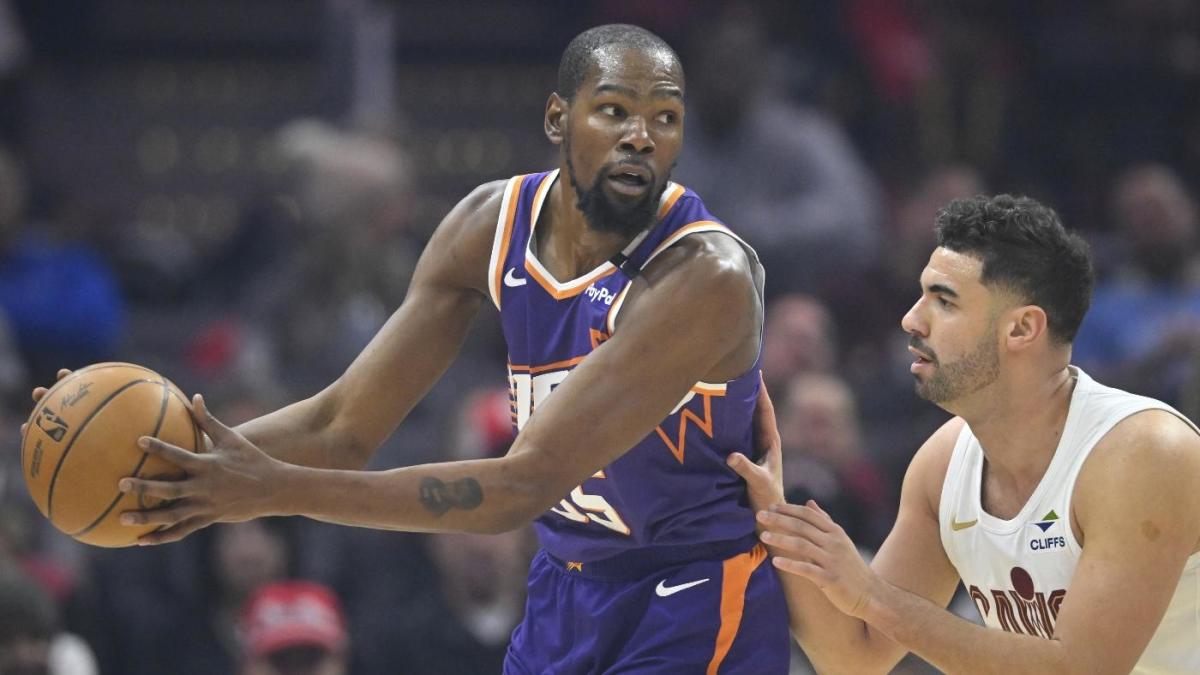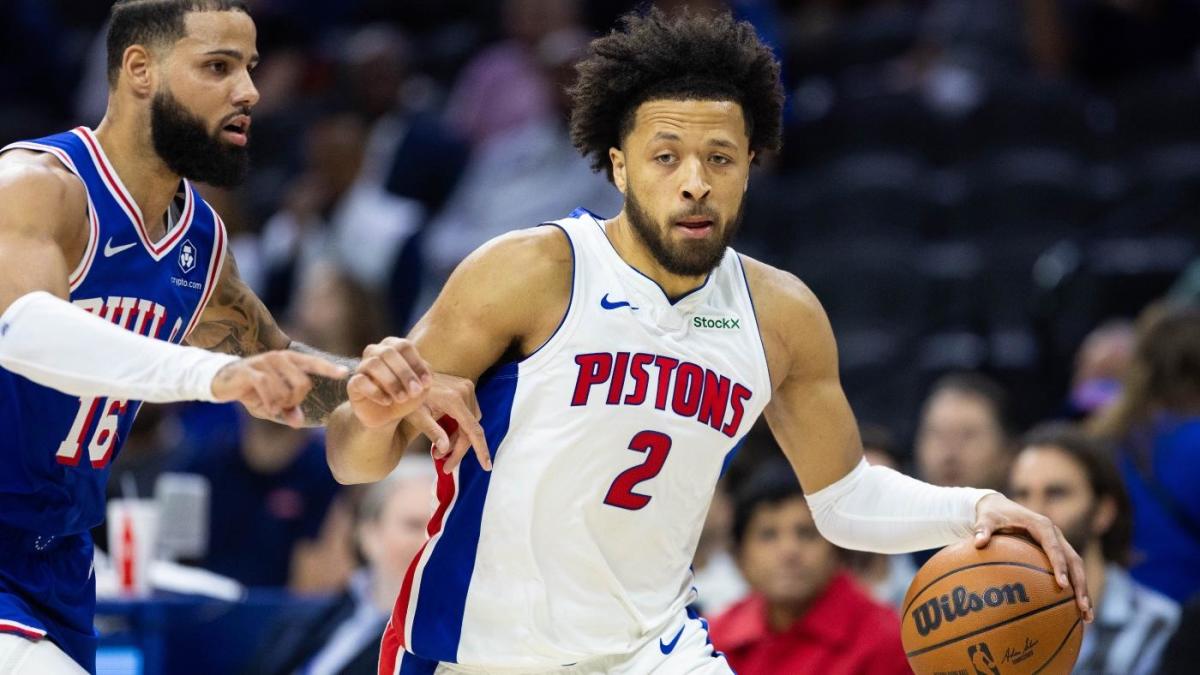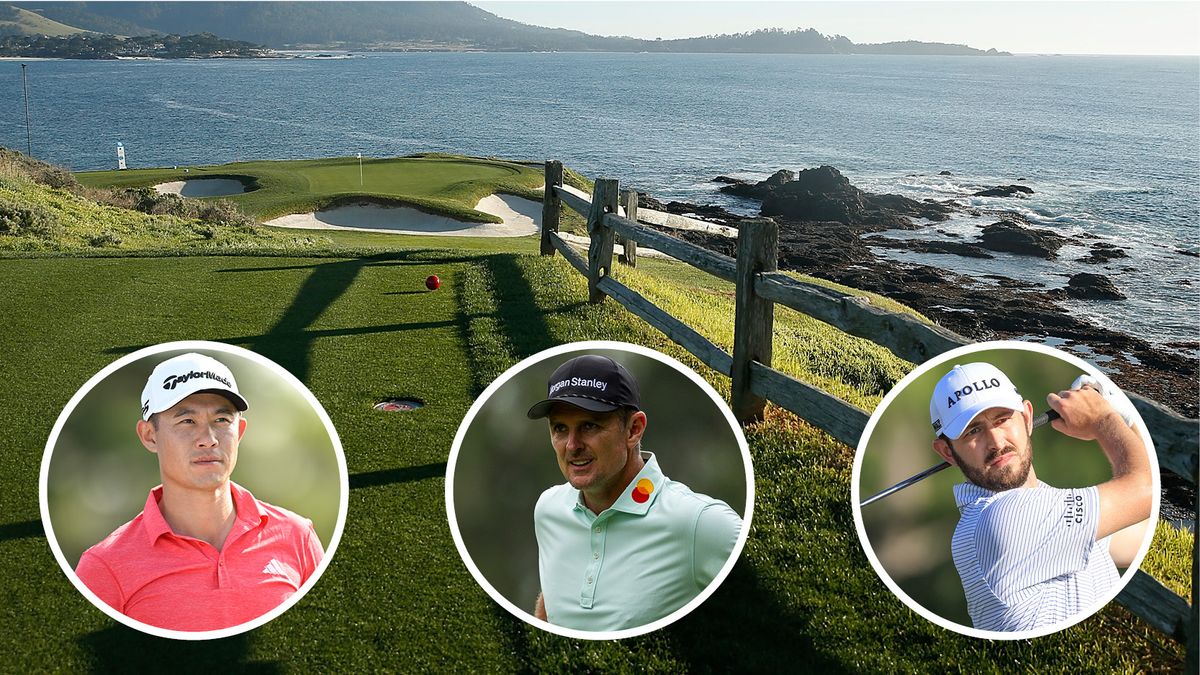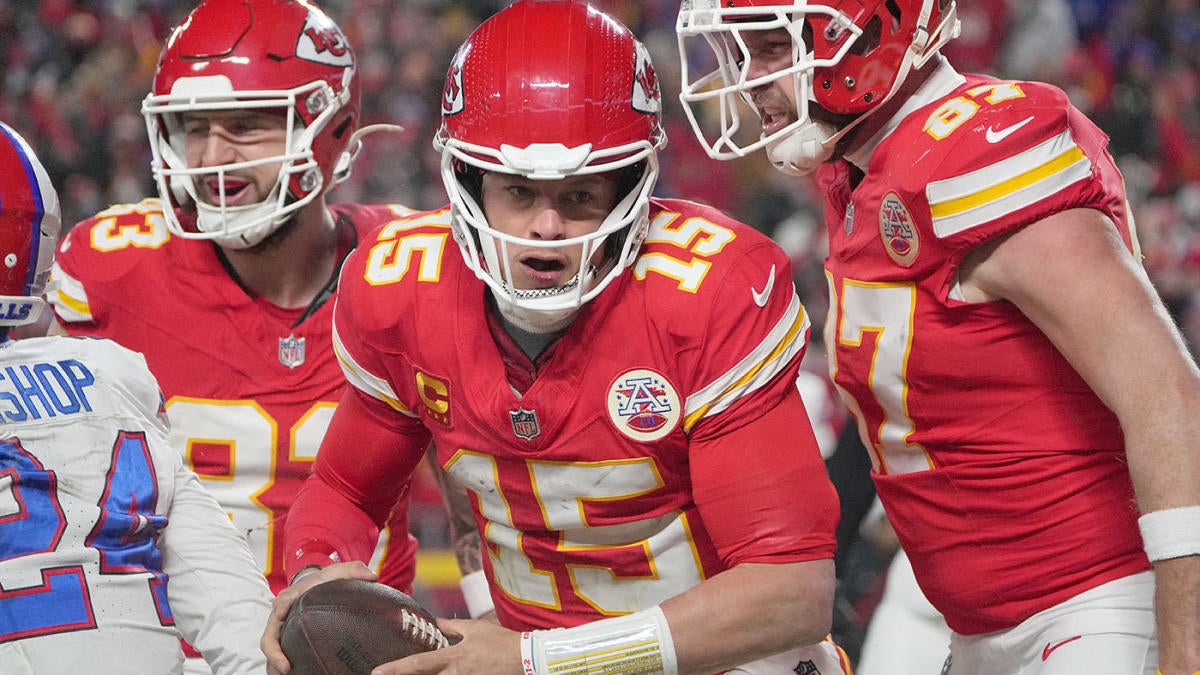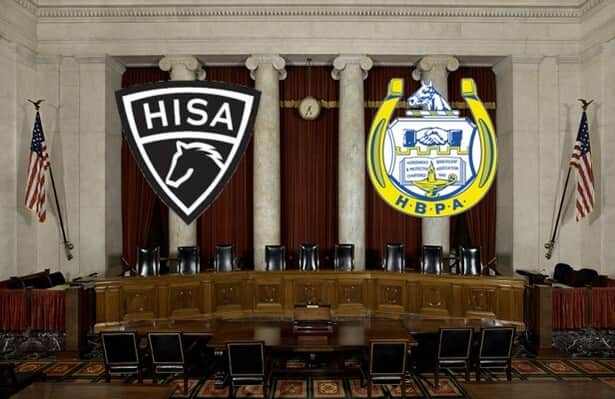Wilt Chamberlain ranks No. 6 on The Athletic’s ‘The Basketball 100’: ‘OK, Wilt’s gonna get his 50’

“The Basketball 100” is the definitive ranking of the 100 greatest NBA players of all time from The Athletic’s team of award-winning writers and analysts, including veteran columnists David Aldridge and John Hollinger. This excerpt is reprinted from the book, which also features a foreword by Hall of Famer Charles Barkley.
“The Basketball 100” is available Nov. 26. Pre-order it here and read David Aldridge’s introduction.
Four thousand, one hundred twenty-four.
Of all the numbers associated with Wilt Chamberlain’s eventful, incredible 63 years, that number — 4,124 — is among the most significant.
That’s the number of people who were, allegedly, at what was then the Hershey Sports Arena in Hershey, Pennsylvania, on March 2, 1962, to witness the NBA game that night between Chamberlain’s Philadelphia Warriors and the New York Knicks. It’s more likely there were far fewer people there, given the, let’s say, creative ways in which attendance for games in the still-fledgling-at-the-time NBA was often tabulated.
The game was not televised. Only a grainy recording of the fourth quarter of the radio broadcast, by WCAU’s Bill Campbell, was preserved. None of the Knicks beat writers made the trip; only a couple came from Philly, about 95 miles southeast of town, so meaningless an assignment it was believed to be. But Hershey was a regular stop on the NBA circuit in those days, as teams barnstormed nearby towns to drum up regional support.
Two hours later, Chamberlain had set the mark that best defined his lifetime of association with prodigiousness. He became the first and only player in NBA history to score 100 points in a contest. That it came in a game that the Warriors led by 19 at the end of three quarters and won by 22 and was almost farcical in its ending, with both teams incessantly fouling one another — the Warriors to get the ball back from the Knicks and give Chamberlain more chances to score, the Knicks to keep the Warriors from getting the ball — has been forgotten by most.
The story of the greatest players in NBA history. In 100 riveting profiles, top basketball writers justify their selections and uncover the history of the NBA in the process.
The story of the greatest plays in NBA history.
Again, so few people were there, and with no video, the game, like much of Chamberlain’s life, became an apocryphal tale.
So great were his talents that the questions surrounding them became legends:
Did he force the NCAA to ban dunking free throws from the foul line, because of his ability to do so from a standing start?
Did he lead the league in assists in 1967–68 just because people said he was too selfish?
You had to be there, in every instance, to be sure.
Chamberlain was a force unlike any other. There was never a man as large as he was — 7-foot-1, 275 pounds — who moved as quickly as he did, almost balletically, yet maintained his freakish strength.
An all-around athlete who dabbled enough in track and field to win indoor and outdoor high jump championships in what was then the Big Seven Conference at the University of Kansas, Chamberlain’s 23,924 rebounds are the most in NBA history. His 55 rebounds in November 1960 against the Celtics — and versus one William Felton Russell — remain the single-game record for boards in league history. Implausibly, in his 14-year career, spanning 1,205 regular season and playoff outings, Chamberlain never fouled out of a game.
His 31,419 points are seventh in league history, but the highest of any player who played before the advent of the 3-pointer.
Chamberlain led the league in rebounding 11 times and in scoring seven times. He was a four-time league MVP and seven-time All-NBA First Team selection. He remains the only player in league history to average 50 points a game in a season (1961-62). That was the same season he led the NBA in rebounding (25.7). And, because he played every minute of all but one game that season, which included several overtime games, he averaged 48.5 minutes a night.
The epochal nature of his battles with Russell over a decade—with their teams meeting seven times in nine postseasons and Chamberlain’s team winning just once — were key to keeping interest alive in the NBA during the 1960s.
While he was at Kansas, Chamberlain—affable and utterly charming at turns, aloof at others—also was a full-blown celebrity, getting the kind of attention, good and bad, from the media at the time that would be comparable to being omnipresent in today’s social media landscape. Millions would likely follow a Wilt Instagram account, devour his latest tweets and breathlessly await the Chamberlain reality series — perhaps set in the Harlem club he owned, Big Wilt’s Smalls Paradise.
“Who is the greatest player of all time?” asked Chamberlain’s longtime friend and fellow Philadelphia native Sonny Hill, who grew up playing against Chamberlain in church leagues and high school before becoming the founder of the Baker League, a summer pro league in Philly, and a pioneering Black broadcaster for CBS Sports in the early 1970s.
“It didn’t say, ‘Who is the greatest winner of all time?’” Hill said. “You never hear that phrase. Well, if you’re saying, ‘Who is the greatest player of all time?’ and the man, to this era today — at one time, he controlled over 100 records in the record book. Right now, he controls somewhere around 35. And still, nobody can even get close to it. So if you’re saying, ‘Who was the greatest player?’ you have to say Wilt Chamberlain, based just on his accomplishments.”
Chamberlain famously said, “Nobody loves Goliath,” and that was true. But they didn’t hate him either. They were likely more in awe, the ones who had a conscience and understood how incredible he was.
Look at Chamberlain’s career averages: 30.1 points, 22.9 rebounds, 4.4 assists, and 45.8 minutes per game.
They don’t seem real. No other player in the history of the game has stats that look anything like these. It’s as if someone was making up words to describe them: “Chamberlain scored eleventy-hunzillion points against Syracuse.”
In the 1969–70 season, after a decade of pounding away against the likes of Russell and others, Chamberlain was 33. That season, with the Lakers, he only played in 12 games because of a knee injury, but in those dozen games, he averaged 27.3 points and 18.4 rebounds a game. It was the first season he didn’t make the All-Star team. Chamberlain then averaged 22.1 points and 22.2 rebounds in the playoffs, leading LA to another NBA Finals appearance. What was a pedestrian stat line for Chamberlain that season would put others in the Hall of Fame.
“We used to sit in the locker room and talk about it and say, ‘OK, Wilt’s gonna get his 50,’ ” recalled fellow Hall of Famer Bob Pettit, among the greatest bigs to ever play the game. “We’ve gotta stop this one and that one — Tommy Gola, Paul Arizin, Hal Greer, whatever.
You’ve got to stop the other guys because you know Wilt’s going to score 50, at least. It was interesting playing against him.”
It became commonplace for Chamberlain. It was not commonplace for anyone else.
Chamberlain scored 50 or more points in a game 122 times, including four playoff games. It took 31 years for the rest of the league to amass 123 50-point games combined, finally “breaking” Chamberlain’s record. Forty-two years later, Michael Jordan is in second place in individual 50-point games; Jordan, who retired 19 years ago, had 39 50-point games, including eight in the postseason.
That leaves him 83 behind Chamberlain.
Kobe Bryant is third with 26 (including one 50-point playoff game).
No one is likely ever getting within shouting distance of Chamberlain’s mark. And that remains the case with many of his records, more than two decades after he died in 1999 from congestive heart failure.
Chamberlain’s prowess was apparent early. He was known as “Dippy” Chamberlain as a teenager. A 1953 newspaper article, when a 16-year-old Chamberlain was starring at Overbrook High in Philly, quoted him as saying he got his nickname after he got a black eye from banging into a low-hanging pipe at a friend’s house, leaving his friends to tease him that he needed to “dip under” such obstacles in the future. As a senior in February 1955, he scored 90 points in a game against Roxborough High. By the time he left Overbrook, he’d broken Gola’s high school scoring record, leading Overbrook to two city titles while going 56-3 in his three varsity seasons.
And Chamberlain already had an inkling of where he’d stand at the next level.
He’d spent the summer before his senior season of high school at Kutsher’s, a resort in the Catskill Mountains of New York State, where well-to-do families went for vacations. But Kutsher’s, like other “Borscht Belt” resorts in the area, also was renowned for bringing in top high school and college basketball players and even some pros from the area to play on its resort basketball team. The players earned tip money at the resort as bellhops and waiters. The athletic director of the Kutsher’s team was an up-and-coming coach named Red Auerbach, who’d just recently taken over the Celtics.
In 1955, Warriors owner Eddie Gottlieb convinced his fellow owners to allow him to use his “territorial draft” rights pick on Chamberlain — except, he wanted to do it in 1959, four years hence. Chamberlain had committed to Kansas and wouldn’t be eligible to play in the NBA until four years after leaving high school.
In those days, NBA teams could claim college players in their geographic areas using a territorial rights pick in the draft, the idea being that popular players in college might convince fans who watched them there to follow them to their nearby pro teams.
Since Kansas was not in any NBA team’s immediate geographic territory, Gottlieb argued he should be able to proactively claim Chamberlain’s NBA rights, since Chamberlain played in Philly in high school. In reality, Gottlieb was terrified that Auerbach, Chamberlain’s Kutsher’s coach, would convince him to spurn Kansas for a college in New England, which would allow the Celtics to use their territorial rights on him in the NBA.
But owners approved the unusual arrangement for Gottlieb.
Chamberlain’s Kansas teams didn’t win a national championship in his two seasons on the varsity, losing a triple-overtime matchup with North Carolina in the 1957 NCAA title game. But no one doubted what the two-time first-team All-American would do in the pros. Chamberlain skipped his senior season at Kansas, spending the year barnstorming with the Harlem Globetrotters. Gottlieb then used his territorial pick as arranged, and the Warriors took Chamberlain third in the 1959 draft.
In his first NBA game, against the Knicks, he scored 43 points and grabbed 28 rebounds, playing all 48 minutes. He was the All-Star Game MVP and led the league in scoring and rebounding. Chamberlain also became the first player in league history — Wes Unseld is the only other, in 1968-69 — to win NBA Rookie of the Year and league MVP in the same season.

Wilt Chamberlain after his historic achievement in Hershey, Pa. on March 2, 1962. (Associated Press)
In Chamberlain’s third NBA season, he turned the league on its head.
He had already broken Pettit’s single-season scoring-average record of 29.2 points set in 1958-59 by averaging 37.6 points as a rookie. The following season, Chamberlain upped his average to 38.4 per game. In 1961-62, Wilt obliterated the standard.
He had a dozen games with 60 or more points. He had two other games with more than 70, including his 78-point effort against the Lakers on December 8, which set the league’s all-time single-game scoring record. And, finally, he went for immortality against the Knicks in Hershey.
He scored 23 points in the first quarter, as the Warriors took a 16-point lead, with many of his buckets coming against New York center Darrall Imhoff, who’d been on the celebrated 1960 U.S. Olympic team that featured Robertson and Jerry West. And Imhoff made the All-Star team in 1967. But he nonetheless knew his pecking order in the pro game. He once told Alan Goldstein of the Baltimore Sun, “Every backup center in the NBA needs a backup. And that’s me.”
By the half, Chamberlain had 41 points. At the end of three, he had 69.
As the fourth quarter began, the possibilities of history began to emerge. Seventy points for Chamberlain was a certainty; 80 likely. Could he go for more? Ninety? The game gave way to what seemed more a science experiment than a competition.
Chamberlain broke his just-set single-game scoring record with a jumper with 7 minutes, 51 seconds left, giving him 79 points. Two free throws a few seconds later made him the first NBA player to ever score more than 80 in a game. He hit 90 points with fewer than three minutes left; 92 points on two free throws with 2:28 left; 94 on a banker; 96 off a steal and fast-break basket.
With a little more than a minute remaining, Philly guard York Larese found a trailing Chamberlain with a lob, which the Dipper deposited into the basket on a forceful dunk. “One minute and one second to play, and he has 98 points — in professional basketball!” Campbell exclaimed into his courtside microphone. “I tell you, that’s a lot of points [even] if you’re playing grammar school kids, isn’t it?”
On Philly’s next possession, Rodgers again passed ahead to Chamberlain before the Knicks could foul. Chamberlain rushed a shot, which missed. Rookie forward Ted Luckenbill grabbed the offensive rebound, though, and passed it right back to Chamberlain, who missed, again. But again, Luckenbill got the ball back for Philly.
“The rebound, Luckenbill,” Campbell said. “Back to [guard Joe] Ruklick, into Chamberlain — he made it! He made it! He made it! A Dipper dunk! He made it! The fans are all over the floor! They stopped the game! People are running out on the court! One hundred points for Wilt Chamberlain! They stopped the game! People are crowding, pounding him, banging him. The Warrior players are all over him. Fans are coming out of the stands.”
Campbell’s call also became part of the Chamberlain legend. Only in 1988, 26 years later, was Campbell’s call discovered, on a reel-to-reel tape of the fourth quarter of the game. It was made that historic night by a then-student at the University of Massachusetts, who was listening to the game but fell asleep. He then taped a rebroadcast of the game later that night and held on to it, not knowing it was the only surviving document of the broadcast. (In 2016, the Library of Congress added the tape to the National Recording Registry, which collects recordings of significant or famous moments and songs.)
Chamberlain finished 36 of 63 from the floor — and, improbably, for the notoriously poor free-throw shooter, 28 of 32 from the line.
He seemed afterward to have mixed feelings about the 100-point game, understanding the significance and uniqueness of the mark, but recoiling at how he had to play to achieve it.
He told Terry Pluto, author of Tall Tales: “The 100-point game will never be as important to me as it is to some other people. That’s because I’m embarrassed by it. After I got into the 80s, I pushed for 100 and it destroyed the game because I took shots that I normally never would. I was not real fluid. I mean, 63 shots? You take that many shots on the playground and no one ever wants you on their team again.”
But the coda to Chamberlain’s dominance was his inability to lift his team past Russell’s Celtics.
They were friends. They would eat together on Thanksgiving if the Celtics and Philly played one another on or near the holiday. But Russell had what Chamberlain wanted — championships. And Chamberlain probably had what Russell wanted — individual acclaim. And they were each fierce competitors. As there were only eight NBA teams — and then, starting in 1961, nine — during the bulk of their careers, they faced each other time and time again. But, much more often than not, Russell’s teams won. Russell’s and Chamberlain’s teams faced off 94 times in the regular season and 49 times in the playoffs. The regular season count: 57-37, Celtics. The postseason count: 29-20, Celtics.
Only in 1967, when Chamberlain’s 76ers, who went 68-13, finally beat Russell’s Celtics in the playoffs, in the Eastern Division finals, and went on to win the NBA title, did the Dipper get the upper hand.
Chamberlain always claimed that the Celtics surrounded Russell with better talent. It was a debatable point. Russell played with 11 future Hall of Famers, including Bob Cousy, Sam Jones, K.C. Jones, John Havlicek, Tommy Heinsohn, and others. But it’s not like Chamberlain had none on his teams: he played with multiple future Hall of Famers during his stints in Philly and LA: Gola, Rodgers, Arizin, Greer, Al Attles, Billy Cunningham, Chet Walker — and, toward the end of their illustrious careers, Elgin Baylor and West.
Decades later, Russell was a little less fierce, telling author Ron Thomas in his book They Cleared the Lane: The NBA’s Black Pioneers, how difficult a matchup Chamberlain was.
“You couldn’t do the same thing to him two nights in a row,” Russell told Thomas. “He had this fadeaway jump shot. He would fade away and shoot the shot, then I got to the point that I could get to it. I could block three or four out of 10. And so he made an adjustment. He rubbed his shoulder against me and then would go up, and then my hand would come to here [Chamberlain’s wrist] and not the ball. So that went on two or three games, and then I noticed what he was doing. So when I’d get up to him I’d turn so he couldn’t rub me.”
Traded to the Lakers in 1968, Chamberlain led them to consecutive NBA Finals, only to lose them both excruciatingly. In 1969 the Lakers played the Celtics again and had Game 7 at home. But Chamberlain hurt his knee early in the fourth quarter and asked out of the game.
Minutes later, while LA was rallying from a seven-point deficit, Chamberlain told coach Butch van Breda Kolff he was ready to go back in. But van Breda Kolff inexplicably left him on the bench for the final minutes, and Russell and Boston held on to, yet again, beat LA.
The following season, the Lakers faced the Knicks in the NBA Finals. This time Game 7 was in New York, and it was Knicks center Willis Reed who overshadowed the Dipper, returning to the court after missing Game 6 with a thigh injury. Reed’s inspiring presence and Walt Frazier’s sensational night led to a Knicks rout, amid a strangely passive game from Chamberlain, who rarely attacked the still-hurting Reed and scored just 21 points on 16 shots.
He had a final triumph, however, anchoring the 1971-72 Lakers team that set the NBA’s record for consecutive regular-season wins at 33, finished 69-13, and barreled through the postseason, beating the Knicks in the NBA Finals in five games for Chamberlain’s second title.
With time, some of the myths about Chamberlain have been cleared up. Chamberlain never tried to dunk a free-throw attempt in a game at Kansas; he did in a scrimmage during his freshman year, while on the freshman team, against the Jayhawks’ varsity team.
But Tex Winter, then the head coach at Kansas State and chair of the NCAA Coaches’ Rules Recommendation Committee, was at the scrimmage. The committee not only banned dunking free-throw attempts but also prohibited offensive goaltending and catching lob passes thrown over the backboard, two other feats affiliated with Chamberlain’s incredible athletic abilities.
In 1968, Chamberlain led the NBA in total assists (702). Was it to prove he wasn’t selfish? To a point. But he also was at the point when he accepted playing a more all-around game, having averaged 7.8 assists the year before, playing more in the high post than ever before.
Truth and hyperbole, winning and losing, the individual versus team: they were all part of the Chamberlain doctrine. He was so dominant it was hard to put his accomplishments in a context that made sense. There was not, and has not been, and likely will never be, anyone like him.
“That season [he averaged 50 points], he averaged over 48 minutes a game. Humanly impossible. Do you think any basketball player you’ve ever known could play at that level?” Hill asked. “He also [averaged] over 25 rebounds that season. When I talked to the referees of that era, they said, ‘Sonny, we can’t call all the fouls against Wilt, because we can’t get the game through.’
“Wilt would have somebody on his left arm, somebody on his right arm, and he would take both of them up and say, ‘What floor do you want to get off of before I dunk you and the basketball?’
“They don’t know. They don’t know!”
Career NBA stats: G: 1,045, Pts.: 30.1, Reb.: 22.9, Ast.: 4.4, Win Shares: 247.3, PER: 26.2
Achievements: NBA MVP (’60, ’66, ’67, ’68), 10-time All-NBA, 13-time All-Star, NBA champ (’67, ’72), Finals MVP (’72), Rookie of the Year (’60), Hall of Fame (’79)
Excerpted from “The Basketball 100” published by William Morrow. Copyright © 2024 by The Athletic Media Company. Reprinted courtesy of HarperCollins Publishers
(Illustration: Kelsea Petersen / The Athletic; Photo: Focus on Sport / Getty Images)
Related
Suns vs. Clippers odds, score prediction, time: 2025 NBA picks,…
We've got another exciting Western Conference contest on Monday's NBA schedule as the P
Cavaliers vs. Pistons odds, line, prediction, start time: 2025 NBA…
The Cleveland Cavaliers (36-9) will look to continue their dominance over the Detroit P
Former All-NBA Guard to Join Jazz G League Affiliate
The Utah Jazz's G League affiliate, the Salt Lake City Stars, made some headlines on Monday morning with their latest addition to the roster.According to ESPN i
Best Sports Betting Picks Today: NBA, College Basketball, NHL Predictions…
Jan 25, 2025; Inglewood, California, USA; LA Clippers guard James Harden (1) reacts against the Milwaukee Bucks in the second half at Intuit Dome. Mandatory Cre
